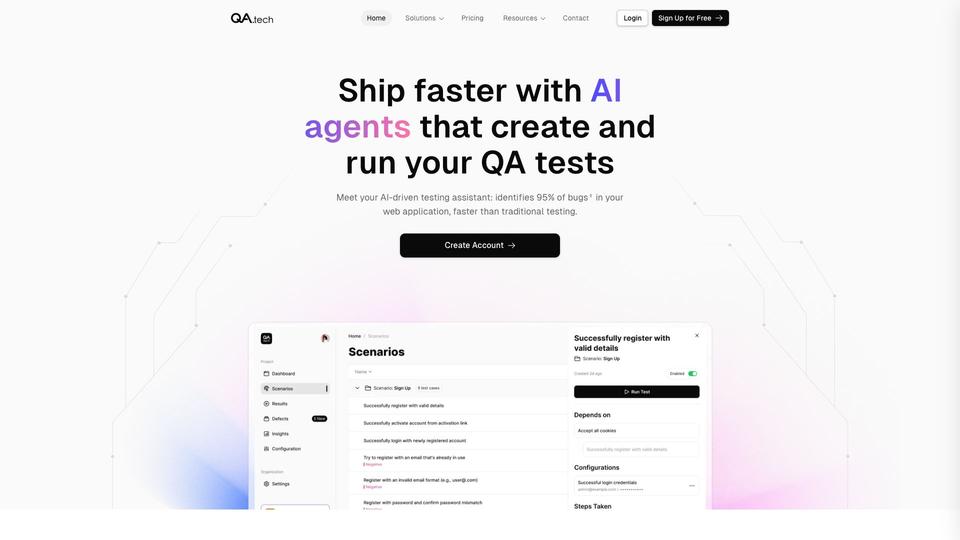QA.tech
Visit WebsiteAn AI-powered platform that automates end-to-end testing for web applications, identifying 95% of bugs and reducing manual QA time by 70%.

Analytics of QA.tech
- Total Visits
- 3.2K
- Avg. Time on Site
- 00:13
- Bounce Rate
- 47.7%
- Pages per Visit
- 1.6
Traffic Sources
Top Regions
What is QA.tech?
QA.tech is an AI-driven platform that revolutionizes end-to-end testing for web applications. It replaces traditional scripted tests with intelligent, automated testing that learns your application's structure and continuously adapts to changes, providing comprehensive test coverage with minimal setup time.
How to use QA.tech?
1. Sign up for a QA.tech account 2. Connect your web application for AI scanning 3. Add credentials and custom data if needed 4. Create tests using simple prompts 5. Edit and customize tests as needed 6. Integrate with your CI/CD pipeline for continuous testing
QA.tech Core Features
AI-powered test generation and execution
Automatic detection of new features and changes
Detailed bug reports with console logs and network requests
CI/CD integration capabilities
Developer-friendly interface with pull request comments
Integration with popular issue tracking tools
QA.tech Use Cases
Automated regression testing for web applications
Continuous quality assurance in development pipelines
Rapid testing of new feature deployments
Reducing manual QA workload
Bug detection and reporting in SaaS applications
Cross-browser compatibility testing
FAQ from QA.tech
How long does it take to set up and run tests?
Tests can be created in about 5 minutes and typically run in around 30 minutes, compared to traditional E2E tests that can take hours or days to set up and run.
What percentage of bugs can QA.tech identify?
QA.tech can identify approximately 95% of bugs, which is higher than the 80% typically caught by traditional E2E testing methods.
Does QA.tech integrate with existing development tools?
Yes, QA.tech integrates with popular tools like Linear, Jira, and Clickup, and can be incorporated into existing CI/CD pipelines.